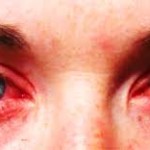 Anaphylaxis is a severe and potentially life threatening reaction which happens when the body is exposed to a protein molecule that the immune system perceives as threatening. An anaphylactic reaction can happen instantaneously or within minutes of exposure to a protein molecule to which your body is hyperallergic.
Anaphylaxis is a severe and potentially life threatening reaction which happens when the body is exposed to a protein molecule that the immune system perceives as threatening. An anaphylactic reaction can happen instantaneously or within minutes of exposure to a protein molecule to which your body is hyperallergic.
Some of the more common allergies which result in an anaphylactic reaction are peanuts, egg allergies and latex. The allergen, protein molecule, which the body perceives as threatening, releases a severe attack mediated by the immune system. A flood of chemicals are released, the blood pressure drops, airways narrow, pulse quickens and many become nauseated and vomit.
Any evidence of an anaphylactic shock reaction necessitates an immediate trip to the emergency room. Individuals who have a previous history of a severe allergic response often carry epinephrine injections with them in case of an emergency. These shots will only support the body for a short period of time and give the individual enough time to get to the hospital. These are not a cure and are not the only treatment necessary during a severe allergic response.
Some other symptoms of an anaphylactic shock also include abdominal pain or cramping, anxiety, confusion, coughing, hives, nasal congestion and slurred speech. Some of the less common causes of an anaphylactic reaction includes food dependent exercise induced anaphylaxis. During this a person eats a specific food and exercises within three to four hours after eating it, thus triggering an immune response. Idiopathic anaphylaxis occurs without any apparent cause.
The exact number of individuals who suffer from anaphylaxis is unknown because not all reactions are reported and milder anaphylaxis may be attributed to asthma or a sudden episode of hives. In some cases a more serious and fatal episode could be attributed to a heart attack since the initial hives, swollen throat and asthma will fade quickly.
The exact causes of the anaphylaxis reaction within the body fall under two separate categories. The first is Immunoglobulin E (IgE) mediated which is the truest form of anaphylaxis and requires an initial sensitizing exposure to an allergen. During this reaction mast cells release large amounts of histamine and other chemical mediators after re-exposure to the initial toxin.
Non-IgE mediated anaphylactic responses are also called “anaphylactoid” reactions and are similar to anaphylaxis but do not require an immune mediated response. These are caused by direct stimulation of the mast cells and the same effects are produced. This type of reaction often occurs on an initial exposure.
When consulting with your primary care physician or allergist they will also want to rule out other conditions that may possibly cause some of the same milder symptoms in anaphylaxis such as other conditions that cause flushing, blood sugar disorder, mastocytosis, panic attacks or heart or lung problems.
If you are with someone who is having a severe allergy attack quick reaction is essential. Call 911 or summon an ambulance as quickly as possible, ensure the person has a pulse and administer CPR as necessary and if they have an epinephrine autoinjector or any antihistamines give them right away.
Once they reach the hospital medical emergency personnel will administer more epinephrine to reduce the allergic response, oxygen to help compensate for restricted breathing, IV antihistamines and cortisone to reduce inflammation and steroid medications to prevent any prolonged symptoms. The autoinjector of epinephrine will only be enough to hold the person over until they get to the emergency room. While they may appear to have recovered well and have no visible signs or symptoms of allergic reaction once the injected epinephrine has been used in the body the reaction can continue to progress.
Resources:
MayoClinic: Anaphylaxis
http://www.mayoclinic.com/health/anaphylaxis/DS00009/DSECTION=symptoms
Food Allergy and Anaphylaxis Network: Anaphylaxis
http://www.foodallergy.org/section/a
American Academy of Allergy Asthma and Immunology: Anaphylaxis: Tips to Remember
https://www.aaaai.org/conditions-and-treatments/library/at-a-glance/anaphylaxis.aspx
American Family Physician: A Practical Guide to Anaphylaxis
http://www.aafp.org/afp/2003/1001/p1325.html


Leave a Reply